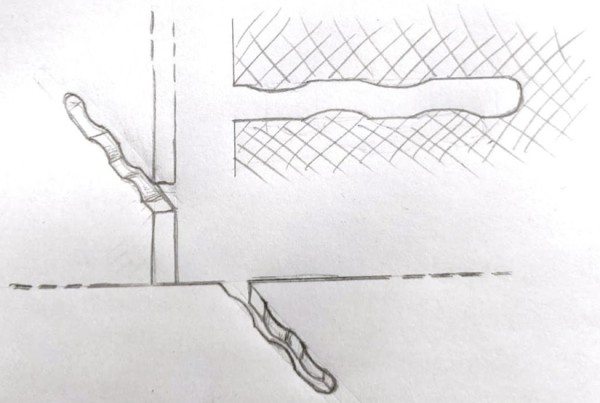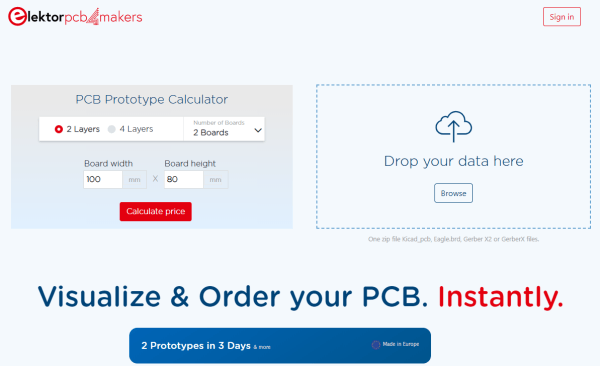Circuit Shorts: Take on Those PCB Ridges
August 11, 2021
on
on
When I ran the Boldport Club, I arranged a few community pub meets. It was a great way to meet people from the larger community and to see and hear what they’d been working on. In one of those meets, I serendipitously told Mike Harrison about what I’d been designing: an object that required interconnecting pieces of PCBs. Mike, with his extensive electronics installation experience, gave me a wonderfully effective tip: add small ridges along the slots on both pieces that are meant to be put together.
Getting the thicknesses of PCBs right is tricky. Firstly, PCBs normally have a 10% thickness tolerance and another tolerance for the slot/cutout routing. Secondly, the actual thickness depends on the design and on what’s at the surface of where it matters ─ copper, plating, finish, soldermask, silkscreen. So the variation in thickness from ‘nominal’ (0.8 mm, 1.55 mm, etc.) can be significant. We can’t keep experimenting until we get it right either; it’s expensive and somewhat pointless because of the tolerances. Adding ridges allows us to hedge our bets with a single go.

The idea is to plan for the best-case on the basis of nominal thicknesses, and make sure that we have appropriate allowances. We want to err on the side of ‘too thin’ on the slot size while the ridges take us a little bit into the ‘too thick’ region. When we get our boards back, if the slots fit well with some friction to hold them in place, great! If they don’t, then we can file the ridges until there’s a good fit. (Remember to use appropriate safety equipment when filing PCBs.)
The downside of this technique is that it doesn’t scale. I needed to build 30 of my designs and I did everything by hand anyway. If you’re making many instances, or in any case, best to talk to the PCB manufacturer about their raw material thicknesses, tolerances, and how to attempt the best fit based on their experience.
Had I not mentioned what I was working on to Mike that day, I could have had a headache putting these things together. I chalk this one valuable tool in my box to the power of sharing and community engagement.
Looking for a rapid prototyping solution? Head over to ElektorPCB4Makers to get two PCB prototypes in three working days!
Getting the thicknesses of PCBs right is tricky. Firstly, PCBs normally have a 10% thickness tolerance and another tolerance for the slot/cutout routing. Secondly, the actual thickness depends on the design and on what’s at the surface of where it matters ─ copper, plating, finish, soldermask, silkscreen. So the variation in thickness from ‘nominal’ (0.8 mm, 1.55 mm, etc.) can be significant. We can’t keep experimenting until we get it right either; it’s expensive and somewhat pointless because of the tolerances. Adding ridges allows us to hedge our bets with a single go.

The idea is to plan for the best-case on the basis of nominal thicknesses, and make sure that we have appropriate allowances. We want to err on the side of ‘too thin’ on the slot size while the ridges take us a little bit into the ‘too thick’ region. When we get our boards back, if the slots fit well with some friction to hold them in place, great! If they don’t, then we can file the ridges until there’s a good fit. (Remember to use appropriate safety equipment when filing PCBs.)
The downside of this technique is that it doesn’t scale. I needed to build 30 of my designs and I did everything by hand anyway. If you’re making many instances, or in any case, best to talk to the PCB manufacturer about their raw material thicknesses, tolerances, and how to attempt the best fit based on their experience.
Had I not mentioned what I was working on to Mike that day, I could have had a headache putting these things together. I chalk this one valuable tool in my box to the power of sharing and community engagement.
More on PCB Design
Want to learn more about PCB design and related topics?- Articles about Circuit Design, ElektorMagazine.com.
- C. Valens and L. Fölkel, "How Do I Solve EMI Problems on the PCB Level?", Elektor and Wurth, November 2020.
- C. Valens, "Getting Started with KiCad EDA - Pcbnew PCB Design," ElektorTV, June 2020.
- S. Drimer, "The Complex Story of PCB Thickness," Eurocircuits.
- Subscribe to the "Circuit Shorts" tag for updates when new articles are published.
Looking for a rapid prototyping solution? Head over to ElektorPCB4Makers to get two PCB prototypes in three working days!
Read full article
Hide full article



Discussion (0 comments)